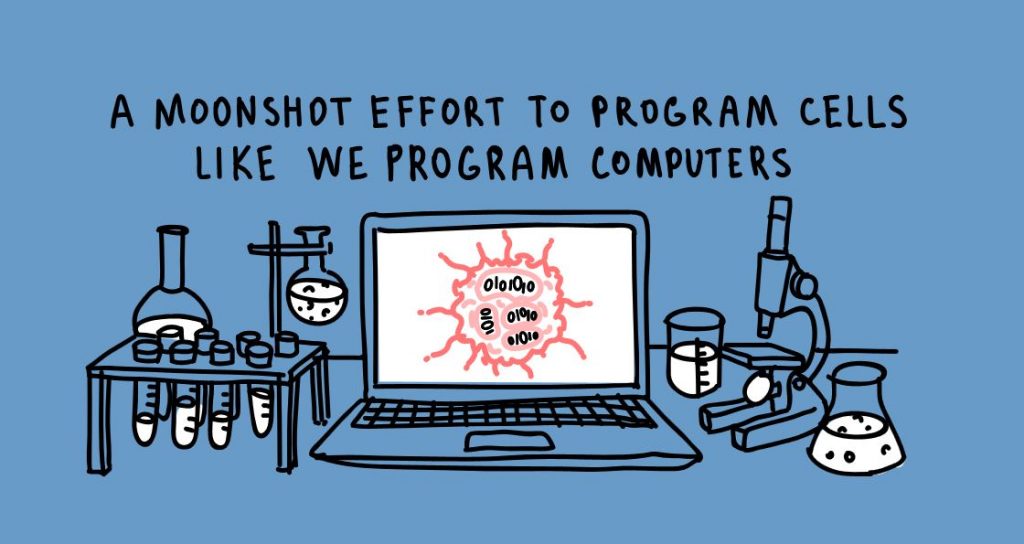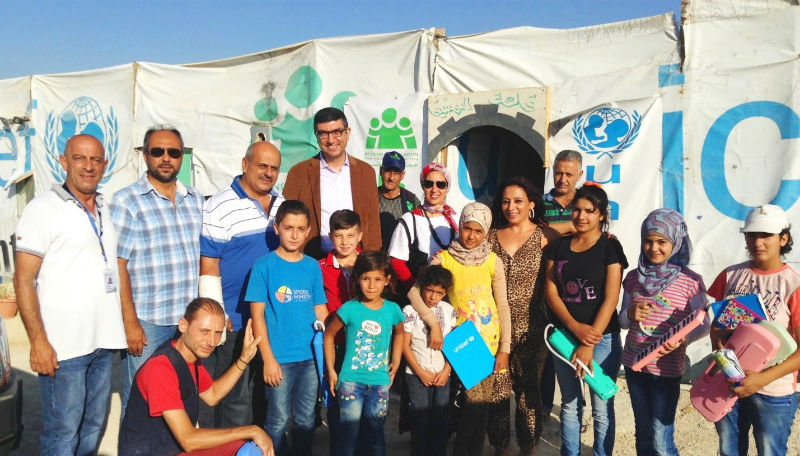As summer officially turned into fall, this week brought plenty of extraordinary news at Microsoft and beyond. Plans to build an “innovation corridor,” researchers’ technology-based battle against cancer and six students’ invention to help blind people are just a few of the remarkable and ongoing efforts that were announced in recent days.
In an in-depth feature story on Monday, we learned about the scientists, engineers and programmers in Microsoft research labs around the world who are trying to solve the complex and deadly challenge of cancer. One team is using machine learning to help oncologists figure out the most effective, individualized cancer treatment for their patients; another is using computer vision to give radiologists a more detailed understanding of how tumors progress.
A third group of researchers has created powerful algorithms that help scientists understand how cancers develop and what treatments will work best, and another team is working on efforts that could actually help scientists program cells to fight diseases someday.
As Jasmin Fisher of Microsoft’s Cambridge, U.K., lab, explains it, they’re “trying to change the way research is done on a daily basis in biology.”
On Tuesday, Microsoft executives joined leaders from across British Columbia and Washington state in Vancouver, Canada, to discuss a big opportunity: creating an “innovation corridor” linking Seattle and Vancouver to enhance both regions and benefit the nearly 12 million people who live there.
Washington Gov. Jay Inslee and British Columbia Premier Christy Clark signed a formal agreement that their governments would deepen their collaboration in key areas like trade, research, transportation and education.
Microsoft is already deeply committed to both places, with its headquarters in Redmond, Washington, and the newly opened Microsoft Vancouver offices that house hundreds of employees and will inject $90 million in direct investment into the city annually.
Microsoft President and Chief Legal Officer Brad Smith writes: “We have the opportunity to contribute to a Cascadia Innovation Corridor that builds on the strengths and shared values of these two great cities and that creates a brighter future for everyone, on both sides of the border.”
A group of MIT engineering students is creating a device they hope will help increase Braille literacy among blind people around the globe — and Microsoft is helping them get a patent for their technology. The six young inventors created the first prototype of their idea, a handheld device that can turn printed words into Braille, in a school hackathon earlier this year.
They are now working to refine their text-to-Braille converter, called Tactile, and hope to make it cost less than $100.
Microsoft’s new #MakeWhatsNext Patent Program is aimed at giving female inventors the legal help and expertise needed to navigate the complicated and often expensive process of obtaining a patent. Team Tactile was one of four teams invited into the program this year.
“There are a lot of potential barriers for women entering tech and staying in tech, from not enough exposure as children to lack of encouragement as they grow up,” said student Tania Yu. “This program makes it a lot easier for women to pursue what they’ve been working on, instead of just dropping a project because they feel like they couldn’t get intellectual property rights.”
There are currently about 800,000 Syrian children in Lebanon. Many of these young refugees want the same things as other kids around the world — to play with their friends, help their families and receive an education that will lead them to a worthwhile career — and yet 75 percent of them are not enrolled in school.
Microsoft is answering the White House’s call to make “new, measurable and significant commitments that will have a durable impact on refugees residing in countries on the frontlines of the global refugee crisis and in countries of resettlement, like the United States.” The company is committed to continue working with governments, international organizations and NGOs to deliver greater opportunity and empower displaced people around the world.
For example, Microsoft is bringing opportunities for refugees to gain globally recognized certifications and is supporting training and counseling programs, as well as investing in an “Innovation Hub” where refugees can learn technology and entrepreneurial skills.
Toni Townes-Whitley, Microsoft corporate vice president of Worldwide Public Sector, writes: “We believe in the power of partnerships and of people from all backgrounds working together to solve these critical challenges.”
On Wednesday, Microsoft announced a first-of-its-kind cloud offering for Europe. The availability of Microsoft Azure from datacenters in Germany brings a new model developed in response to customer needs.
Customer data in the two new German datacenters is managed under the control of a data trustee, and access is only provided with the permission of customers or the trustee. Microsoft’s commercial cloud services in these new datacenters adhere to German data-handling regulations and give customers additional choices of how and where data is processed.
Microsoft Cloud Germany’s approach creates increased opportunities for innovation and economic growth for highly regulated partners and customers operating in Germany, the European Union and the European Free Trade Association, writes Takeshi Numoto, corporate vice president of Microsoft Cloud + Enterprise.
In gaming news, as fans worldwide get ready for the Oct. 11 release of “Gears of War 4,” a group of IT pros have been hard at work on the latest installment of the blockbuster series. For nearly two years, IT services manager Joe Vogt and his colleagues at Microsoft’s British Columbia-based gaming studio The Coalition have been increasingly focused on making sure the studio’s IT infrastructure would support the staggering demand.
“Necessity is the mother of invention around here. We always answer ‘yes,’ and then find a way to make it happen and deal with the problems as they come up,” Vogt says.
A feature story tells the fascinating tale of the game studio’s epic overhaul with help from Microsoft IT.
In other much-anticipated gaming news, the full version of “Minecraft: Education Edition” will be available to purchase in the Windows Store on Nov. 1.
This week on its Facebook, Instagram and Twitter pages, Microsoft highlighted G-Paws, a fitness tracker for pets. G-Paws is a small, wearable device for pet collars that runs on the Microsoft Cloud.
 It tracks pets’ movements throughout the day and also encourages pet owners to engage in friendly competitions within a social “petwork.” With the help of Microsoft, more than 20,000 pets have logged more than 1 million miles of adventure.
It tracks pets’ movements throughout the day and also encourages pet owners to engage in friendly competitions within a social “petwork.” With the help of Microsoft, more than 20,000 pets have logged more than 1 million miles of adventure.
Learn more about G-Paws and its genesis involving a chubby cat named Yollo on the Microsoft Transform blog.
And you’re now caught up on this week’s highlights! Join us here next week for the latest edition of Weekend Reading.
Posted by Tracy Ith
Microsoft News Center Staff





